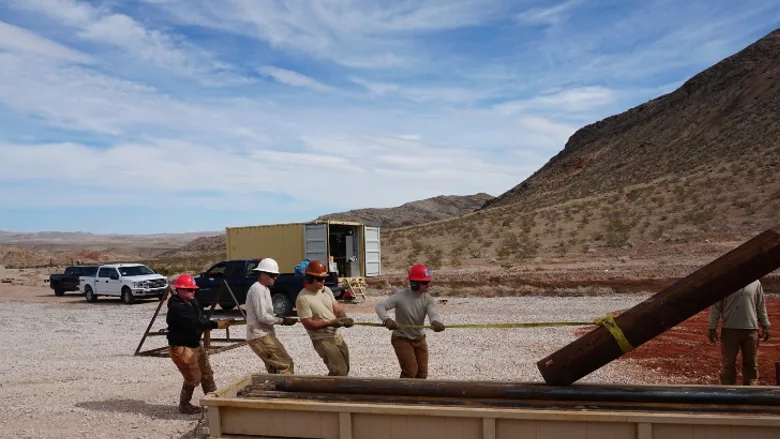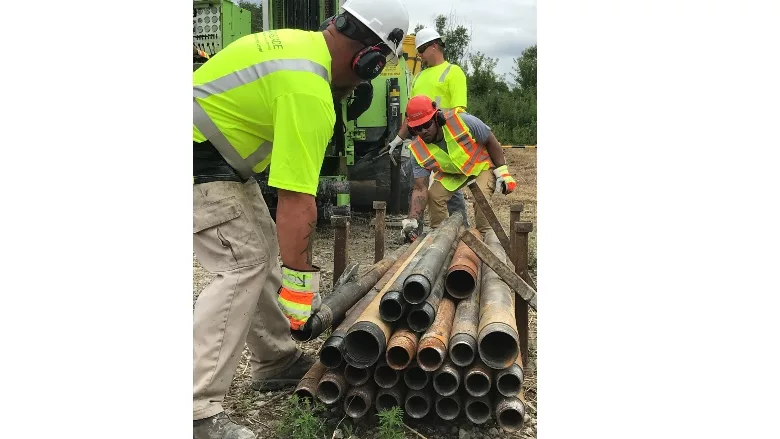Exertion, Repetitive Stress Injuries in Drilling and Construction
Ergonomics, Lifting Policies Can Help Minimize Risks

Many common tasks in drilling and construction — from rod handling to lowering casing — can pose a high risk for overexertion injuries and the general aches and pains we associate with soft-tissue injuries.
Source: Brock Yordy

What is your company’s lifting policy? Does it get put into practice out in the field?
Source: Jeremy Verdusco
Warning, the following content features data and statistics that account for over 50% of construction industry injuries. Workers who performed these stunts (that is, “daily tasks”) did not do so as professionals. In fact, they probably did so with little supervision from managers who might warn them of the dangers of overexertion. The result? Soft tissue injuries to the lower back, shoulders, knees and many other joints.
The next day the alarm goes off. It’s 6 a.m. You have already hit snooze twice because of exhaustion. The underlying cause? A long, hard, repetitive workday followed by chores at home and an attempt to unplug before bed. You hit the sack a little after midnight, tossing and turning most of the night over poor choices on the jobsite. You wake up stiff, sore and unrested. Over half of our industry relates to that scenario, and the reality is that the rest of the drilling industry ignores the pain or medicates it.
The Centers for Disease Control and Prevention (CDC) calls overexertion the leading cause of work-related soft-tissue or musculoskeletal disorders among construction workers. The Bureau of Labor Statistics (BLS) traces more than 50% of soft-tissue injuries to lifting objects. Consider all the tasks that require lifting that you performed while drilling or pulling pumps. What is your company’s lifting policy?
The drilling industry’s favorite answer to that question: “It depends.” It depends on the size of the employee. It depends on the size and shape of the object. It depends on if the jack pad is stuck in the mud or not. Pulling, pushing, lifting and carrying all occur regularly on every jobsite. The BLS has a definition of “musculoskeletal disorders” to help guide that answer: “Injuries or illnesses that result from overexertion or repetitive motion … include soft-tissue injuries such as sprains, strains, tears, hernias, and carpal tunnel syndrome.” Overexertion is one of the leading causes of non-fatal injuries, and the number one cause of long-term injuries that result in individuals leaving the construction industry before retirement.
The Ergonomics of Drilling Work
Often our industry’s solution to soft-tissue and musculoskeletal injuries involves working “smarter, not harder.” This approach seems to imply that, with a better understanding of our body’s capabilities, we can prevent overexertion injuries. The actual solution starts with bringing the team together to study the ergonomic processes of daily jobsite tasks. This study should assess the team’s work, and the relationship between the physical job and the ability of the team to make good choices. The goal is to determine the best tools, processes and environment for a given employee. Consider things like a given employee’s height and physical fitness. How can that person best execute utilizing existing tools with well-thought-out techniques? Are other tools, supports or processes required? Once you complete an ergonomic study, the team should discuss past standard operating procedures, tools, near misses and injuries. Then, establish processes utilizing proper ergonomics that prevent repetitive stress and overexertion.
After the equipment checks and the equipment warms up, the team can warm up. Stretching before tasks start is a primary preventive measure for overexertion injuries.
I hear you shouting, “Brock, we have a workforce shortage and can’t hire perfectly-fit new hires.” Correct! However, you can establish daily “start-up” processes for crews similar to what you have for equipment startup. After the equipment checks and the equipment warms up, the team can warm up. Stretching before tasks start is a primary preventive measure for overexertion injuries, so build in time. The benefits to the team include increased blood flow to warm up muscles, increase mental alertness, reduced fatigue and improved muscle elasticity. As athletes in high school sports, we warmed up and cooled down for every practice and game. Even our dogs know to stretch and flex before activity.
The next significant factor in preventing musculoskeletal and overexertion injuries involves recognizing tasks that have the most impact on employees. Consider repetitive tasks, constant stress, awkward positions, force and even poor posture. For example, activities like handling drill rods, lowering casing and servicing deep-set pumps all pose significant risk to our employee’s ability to stay healthy and productive all week.
Automation and Rod Handling
The 21st-century solution to overexertion and repetitive stress eliminates the task with technology and automation. Hands-free breakout technology, rod handling and multipurpose rod/casing handling arms not only remove the employee from repetitive, awkward movements that cause ergonomic injuries, but also eliminate the risk of struck-by and caught-in-between injuries. Hands-free technologies are available in North America, but have not seen as much acceptance by the industrial drilling here as in other parts of the globe. Australia and Europe do an excellent job accepting these options, thereby eliminating the risk associated with physical handling of casing and tooling. The North American perception often considers automation too slow and too costly to the project. Sadly, perception is not true. Automation is consistent and risk-free. “Speedy” human operators doing physical handling eventually lead to damage or injury, whether by rushing, cutting corners or lapsed attention.
As we wrap up the 2022 drilling season, I challenge all drilling disciplines to sit down with your teams. Discuss the injuries that occurred this year. Ask your group about fatigue, stiffness and soreness affecting them. Yes, as a rough and demanding industry we often believe soreness is the only true sign of hard work. However, we must change this poor cultural choice, just like any other safety practice we, as an industry, have accepted. Our teams need to enjoy their home time free of pain.
Looking for a reprint of this article?
From high-res PDFs to custom plaques, order your copy today!





